More than monitoring, Nightingale V6 is here! Today we solemnly release the Nightingale 6.0 beta version, which fully supports Metrics, Logging, and Tracing, and is moving towards building an open source, open, and complete observability solution. With Nightingale V6, you can access and manage multiple data sources such as Prometheus, ElasticSearch, and Jaeger, and realize unified visualization, alarm, and analysis of data.
???? Data sources can be managed on the page
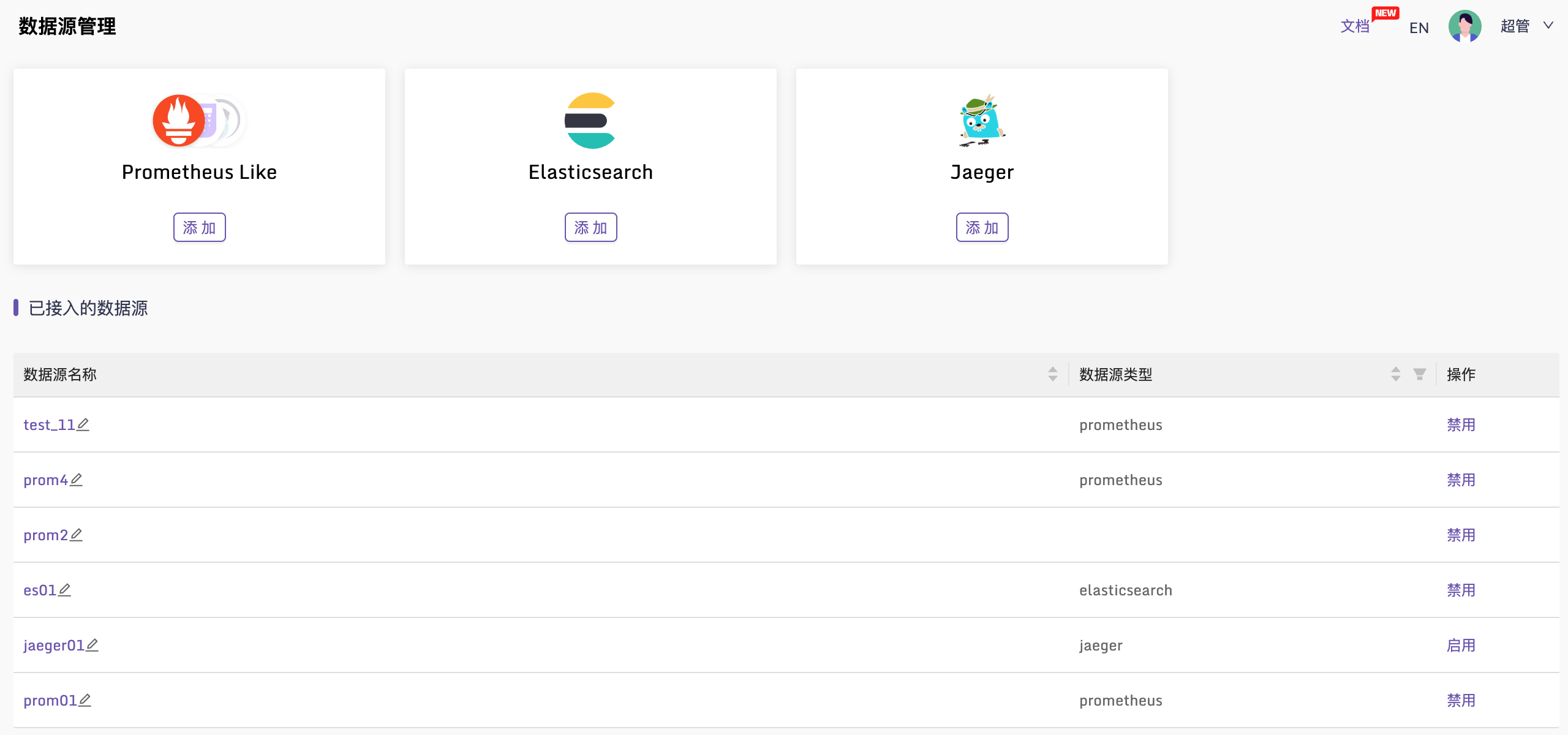
There is no need to modify the Clusters configuration in the configuration file, it can be managed directly on the page. In addition to data sources compatible with the Prometheus query protocol, Jaeger and ElasticSearch are also supported as data sources.
???? Can access ElasticSearch data source
Similar to Grafana’s configuration experience, you can access existing ElasticSearch data sources. Naturally, you can view ElasticSearch data in Nightingale, and monitor chart data of the market can also be obtained from ElasticSearch.
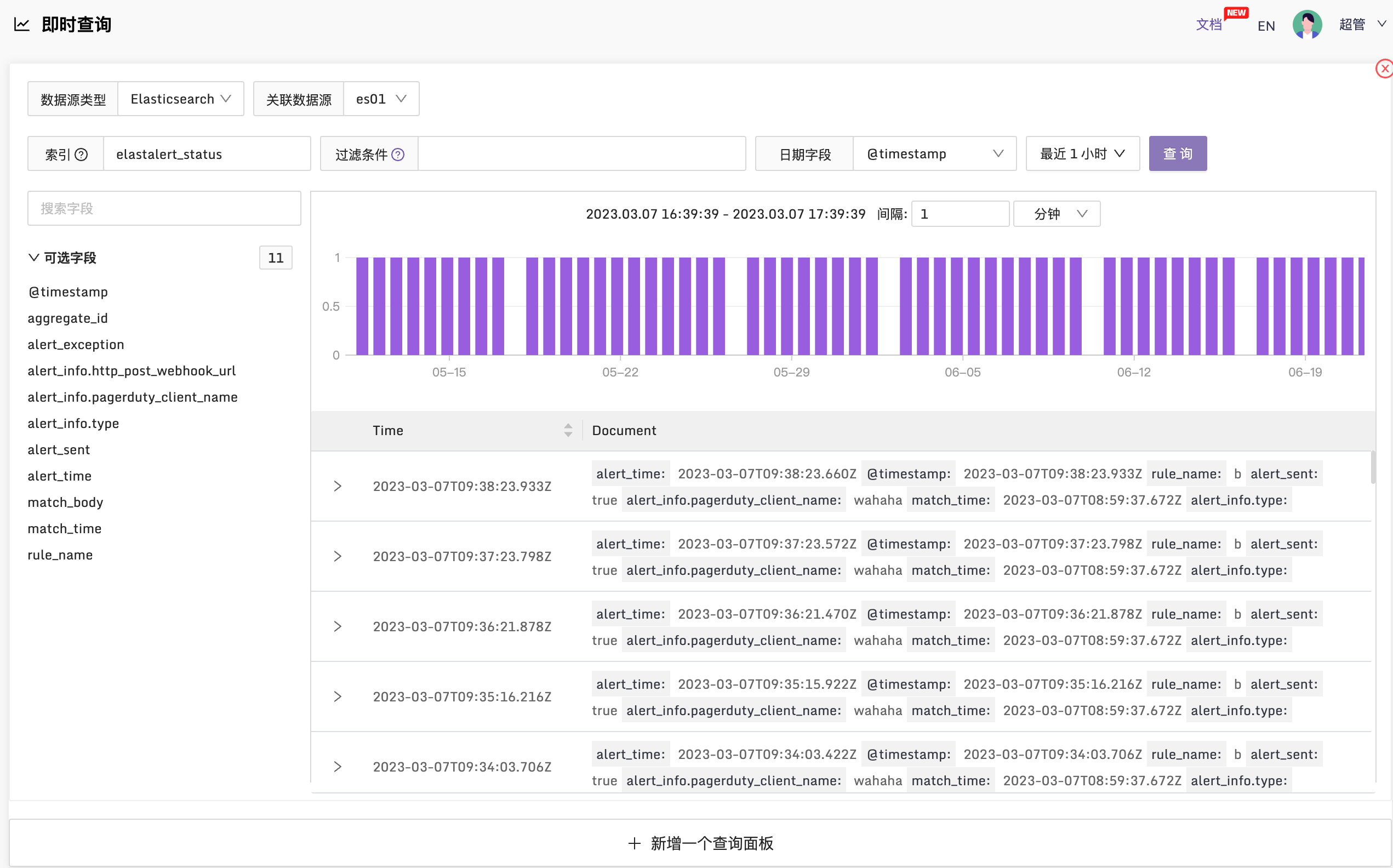
???? You can access the Jaeger data source to view the link data
Jaeger is a leader in link tracing in the CNCF blueprint, so we first supported Jaeger, and the current effect is that you can view Trace Gantt charts and topology dependencies in Nightingale.
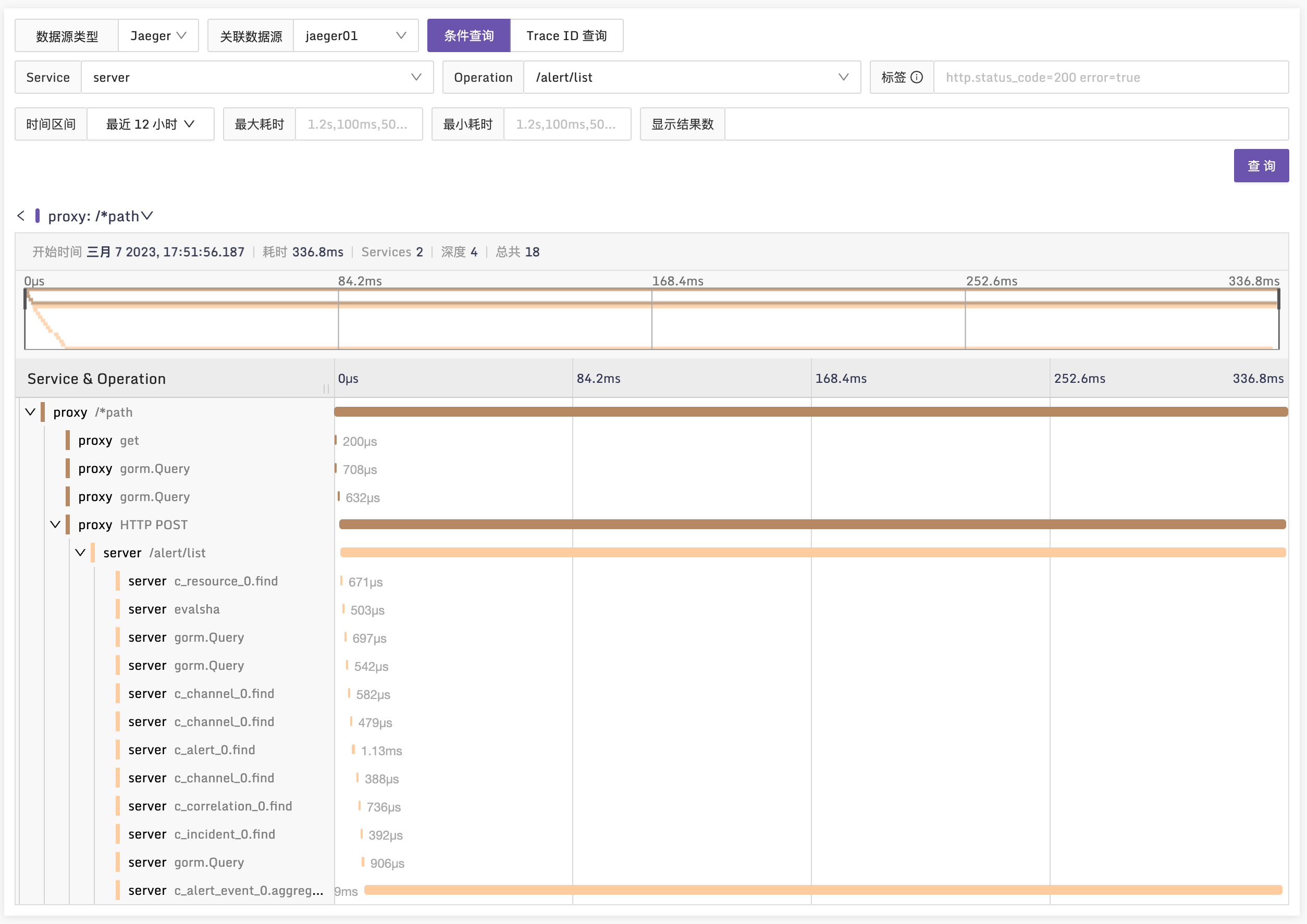
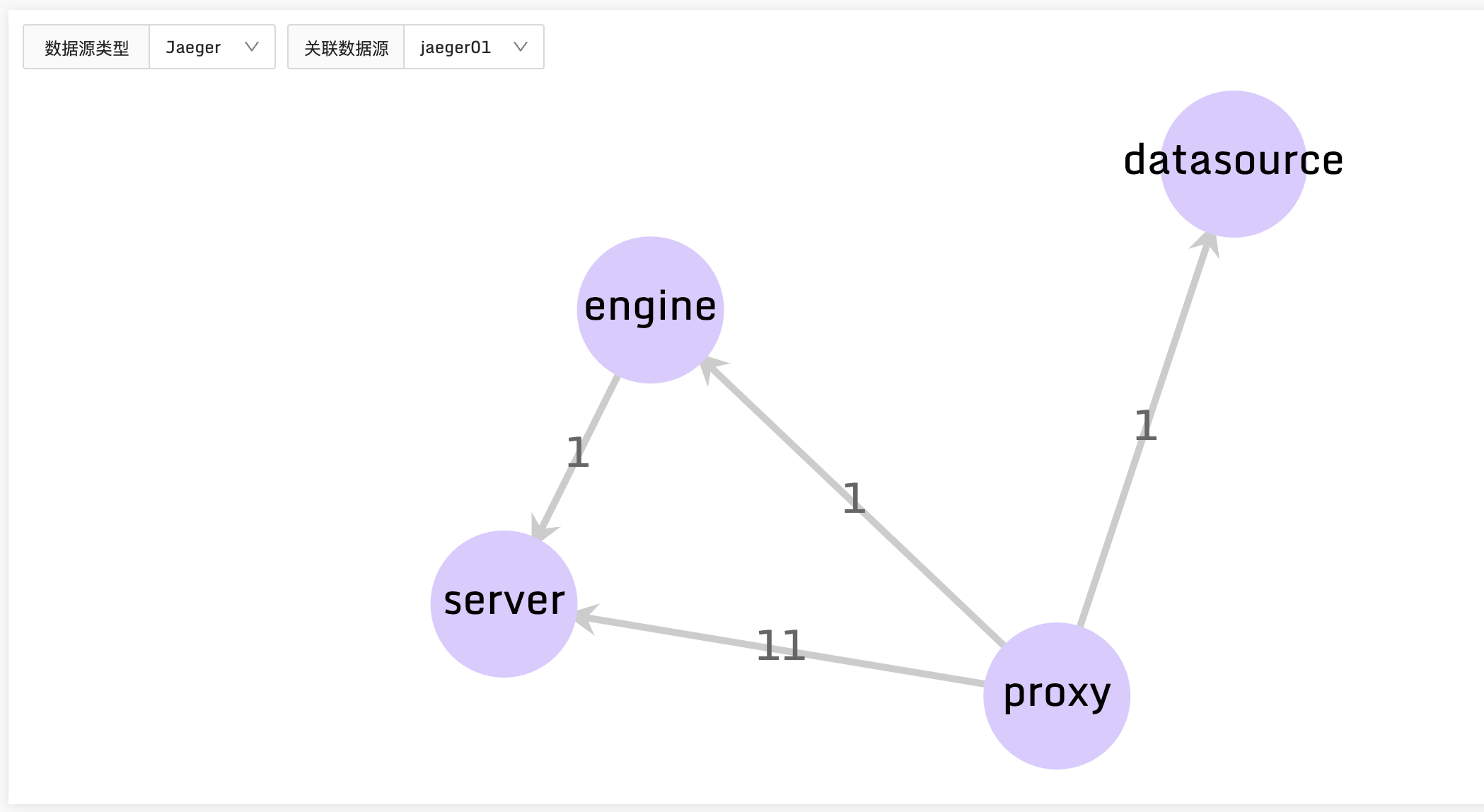
In this version, the data of metrics, logging, and tracing can all be visualized, but the data concatenation is still not good enough. Subsequent versions will continue to iteratively optimize, and the Long March has taken a step ahead.
???? Architecture simplified
The Nightingale 5.x version requires at least two modules, n9e-webapi and n9e-server, and since 6.x, only one module is required by default, which is called n9e. Let’s review the architecture of 5.x first:
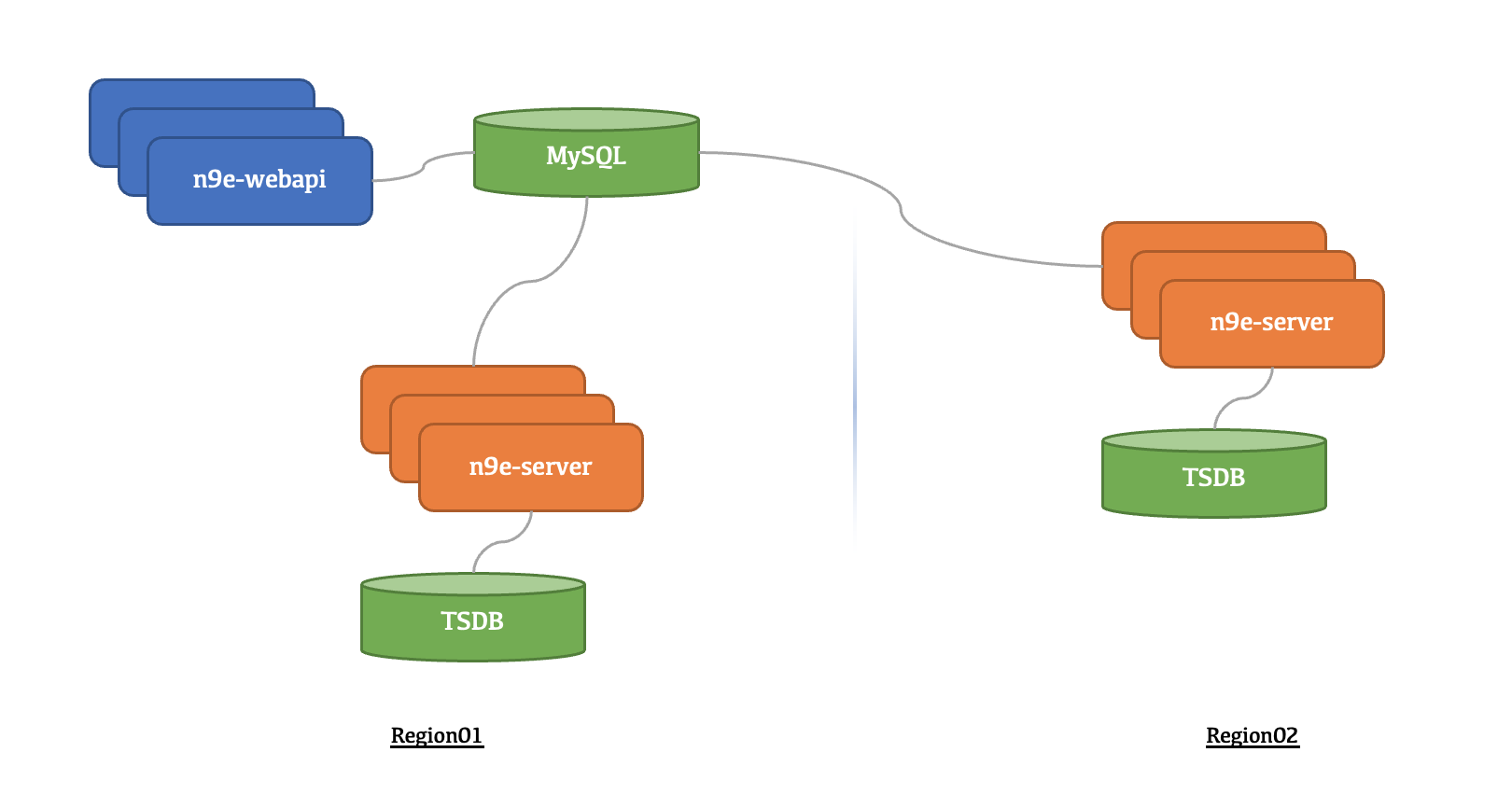
Assuming two clusters, Region01 is the central computer room, and a whole set of Nightingale is deployed. The network link between Region02 and Region01 is not good, so Region02 has a separate set of TSDB, n9e-server follows the TSDB, so Region02 also deploys a set of n9e- server. In fact, Redis is not drawn in the picture. Both n9e-webapi and n9e-server rely on Redis. You can use one Redis globally, or you can deploy your own Redis for each set of n9e-server.
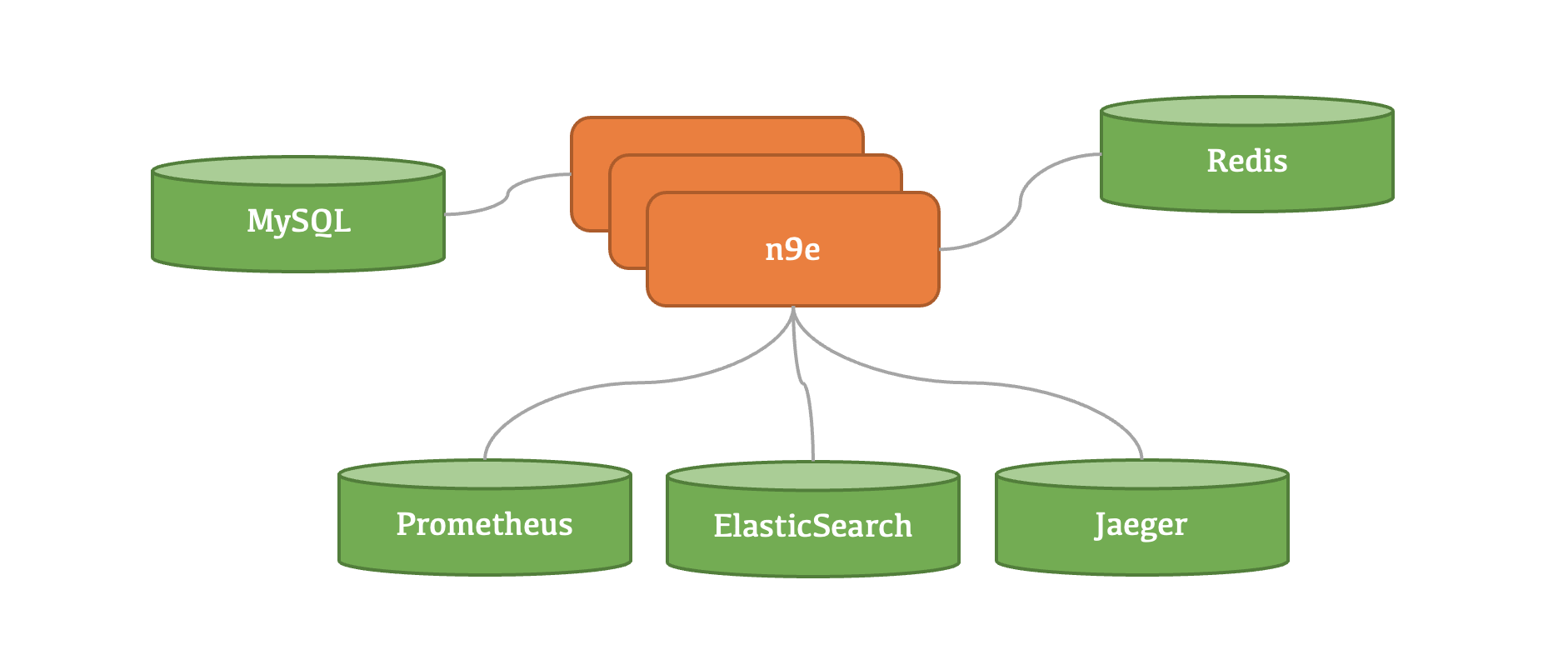
The 6.x version combines the webapi, pushgateway, and alerting modules into one n9e module. This module can connect to multiple data sources. The n9e module can also deploy multiple instances to form a cluster, which makes the architecture simpler.
Of course, if the network link between a certain computer room and the central computer room is not good, it is OK to deploy a set of timing library + alarm engine in this remote computer room. In addition to the n9e module, we also provide n9e-pushgw (data forwarding gateway) and n9e-alert (alarm engine) separately. These two modules are optional and are not usually used. They are only used to deal with poor network links in remote computer rooms. Condition.
???? Improved maintainability
In addition to simplifying the architecture and reducing maintenance complexity, many configurations have also been moved to the page for management. For example, the configuration related to single sign-on and the configuration related to the alarm sending template:
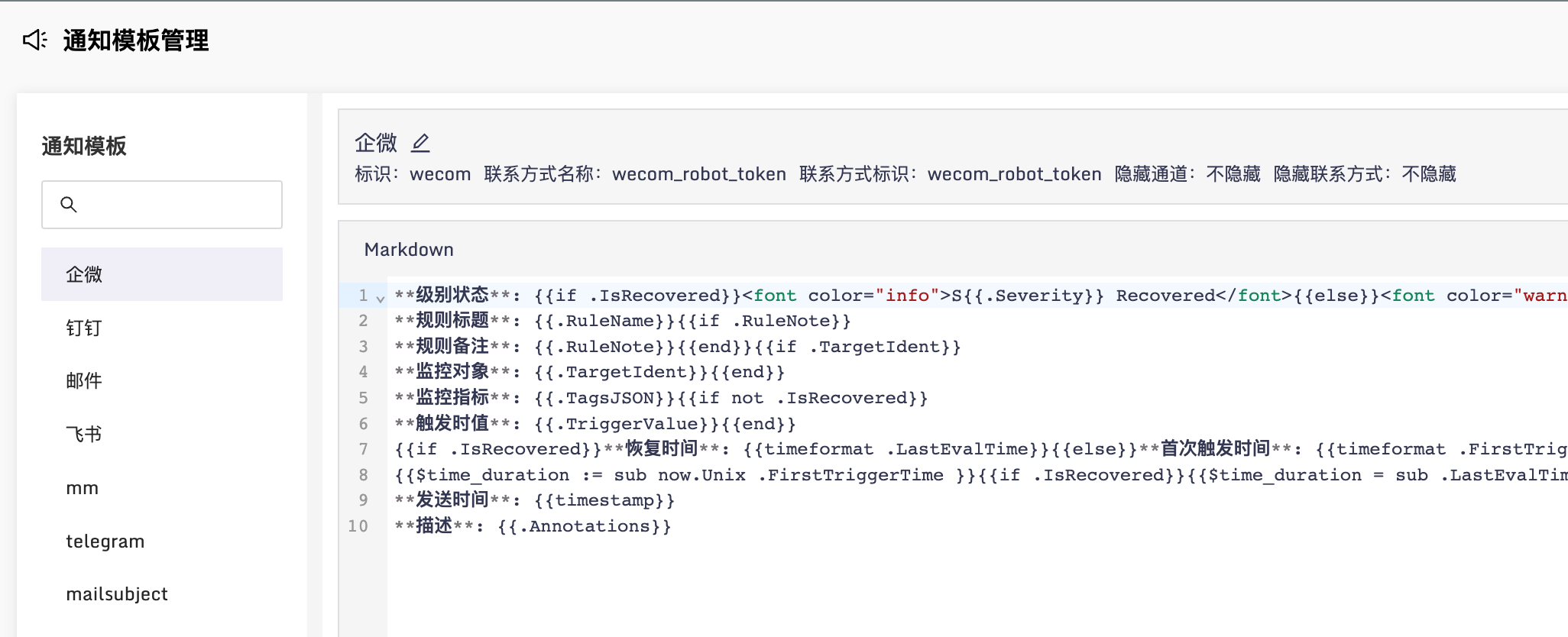
The role management has also been moved to the page, instead of creating new roles by modifying the database like in the 5.x version.
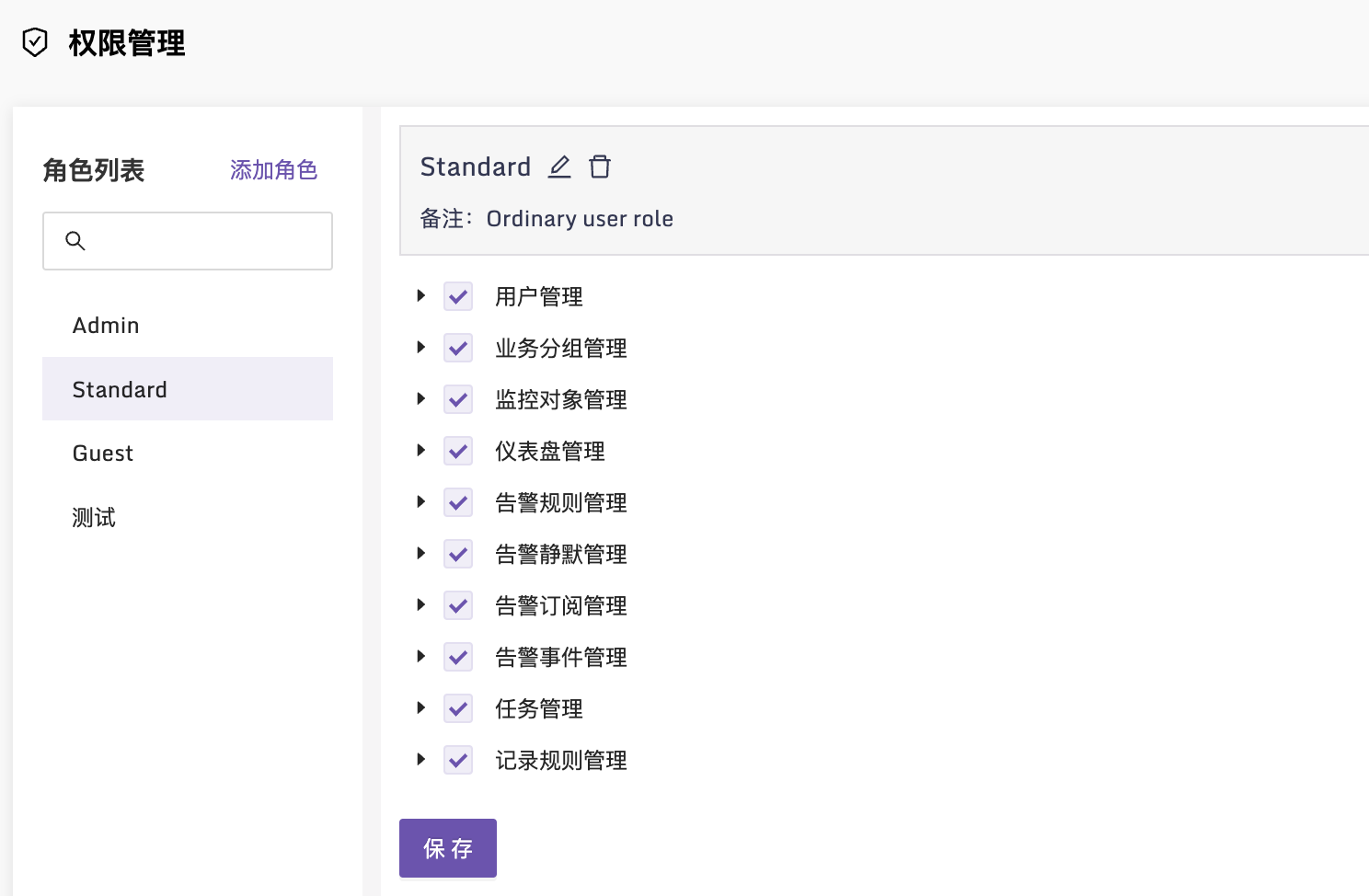
???? Added built-in monitoring panel
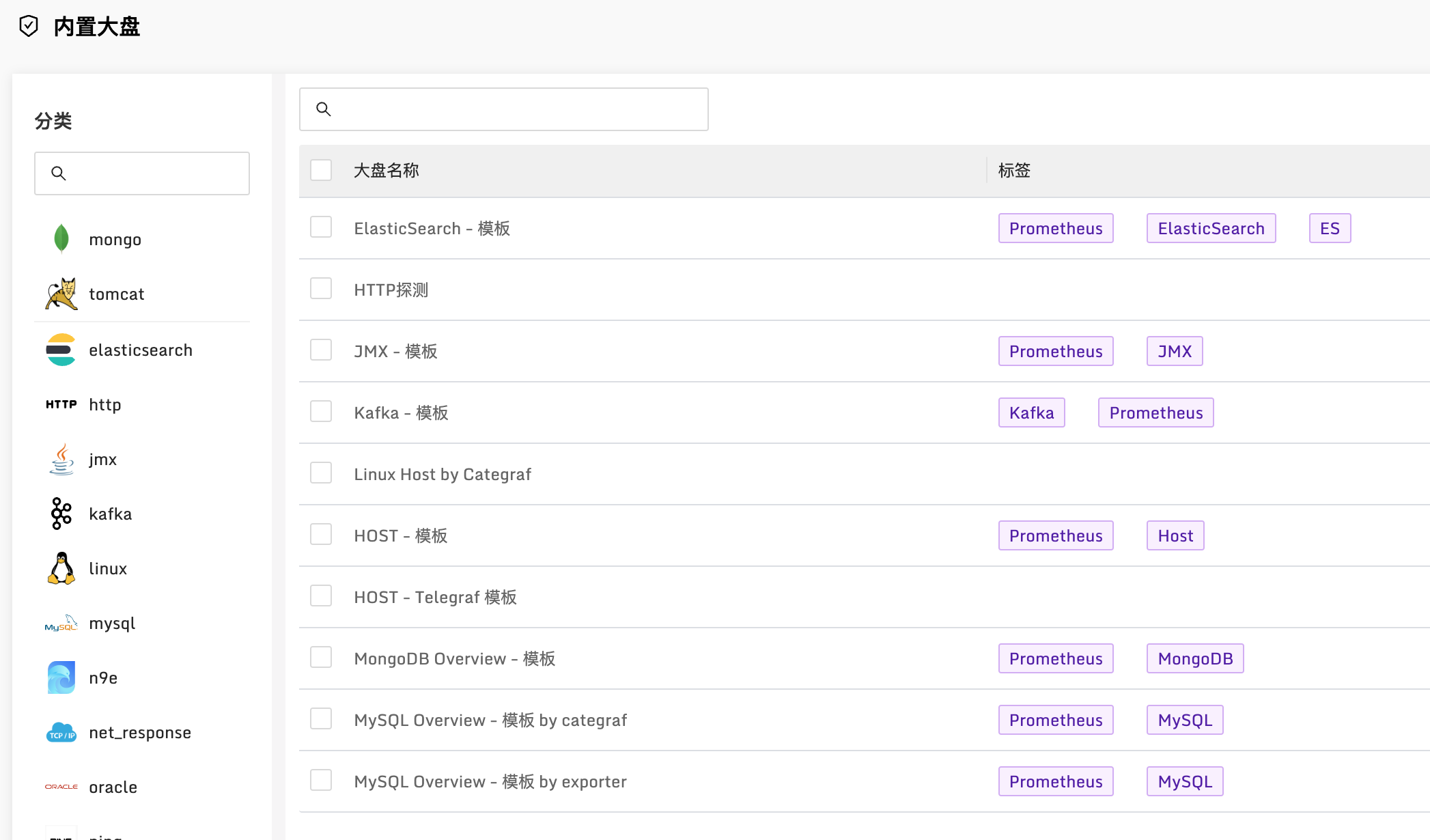
The 5.x version actually has a built-in monitoring dashboard, but it must be imported into its own business group for use. Starting from 6.x, a built-in dashboard browsing page is provided, which can be used directly without importing your own business group.
Friends from the Nightingale community are welcome to build and create together, to make a lot of built-in monitoring panels, and to contribute to community construction.
???? Added built-in alert rules
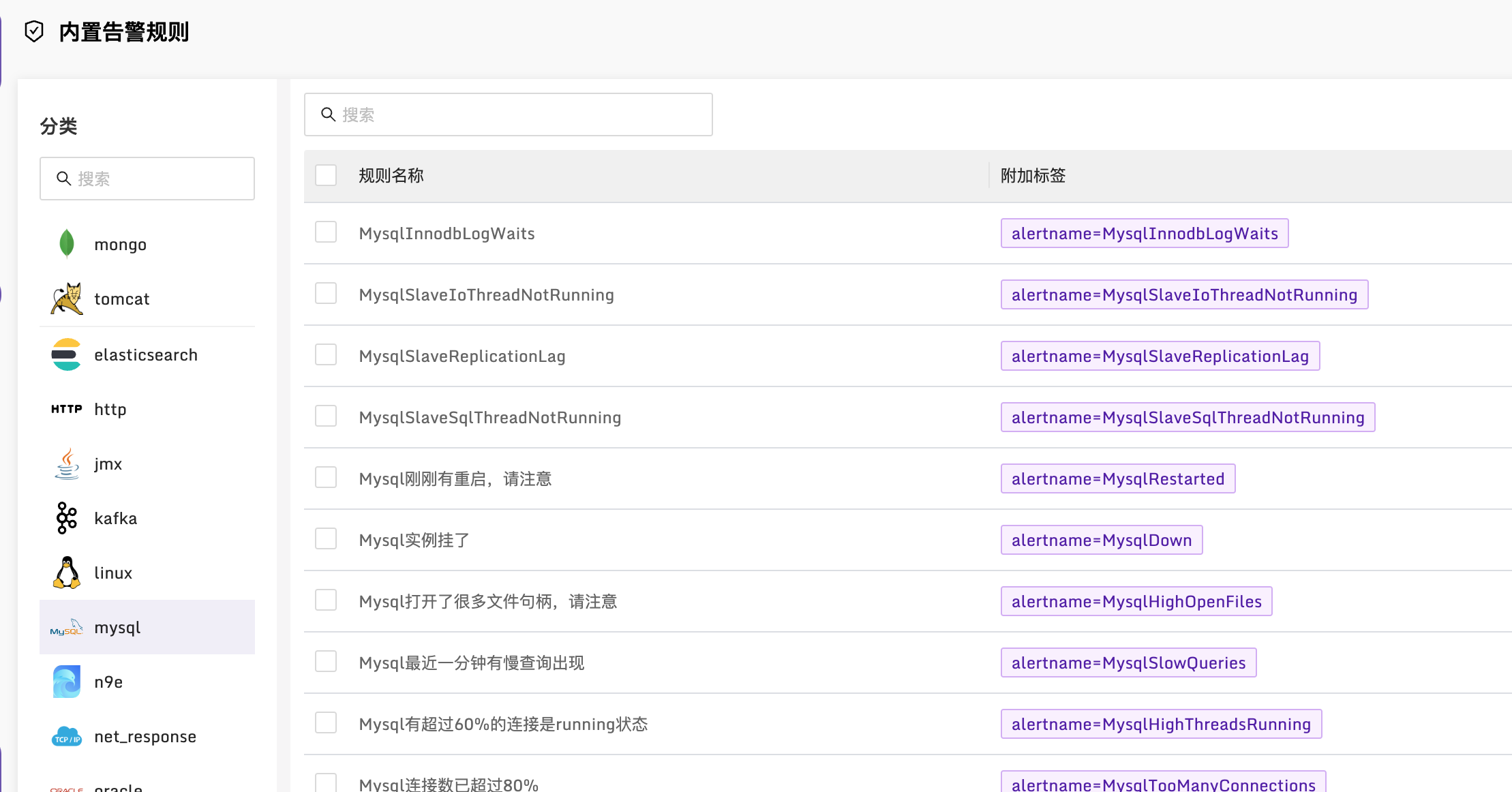
In the same way, alarm rules for various components are also built in, which greatly increases the convenience. Of course, we are not omnipotent, and we look forward to co-creation and co-creation with community partners, and we will also make a lot of built-in alarm rules. If you don’t know how to contribute, you can contact us????
???? Continue to optimize the alert rules

Additional tags support variables, so we can do some secondary processing on the tags of the vector of the alarm.
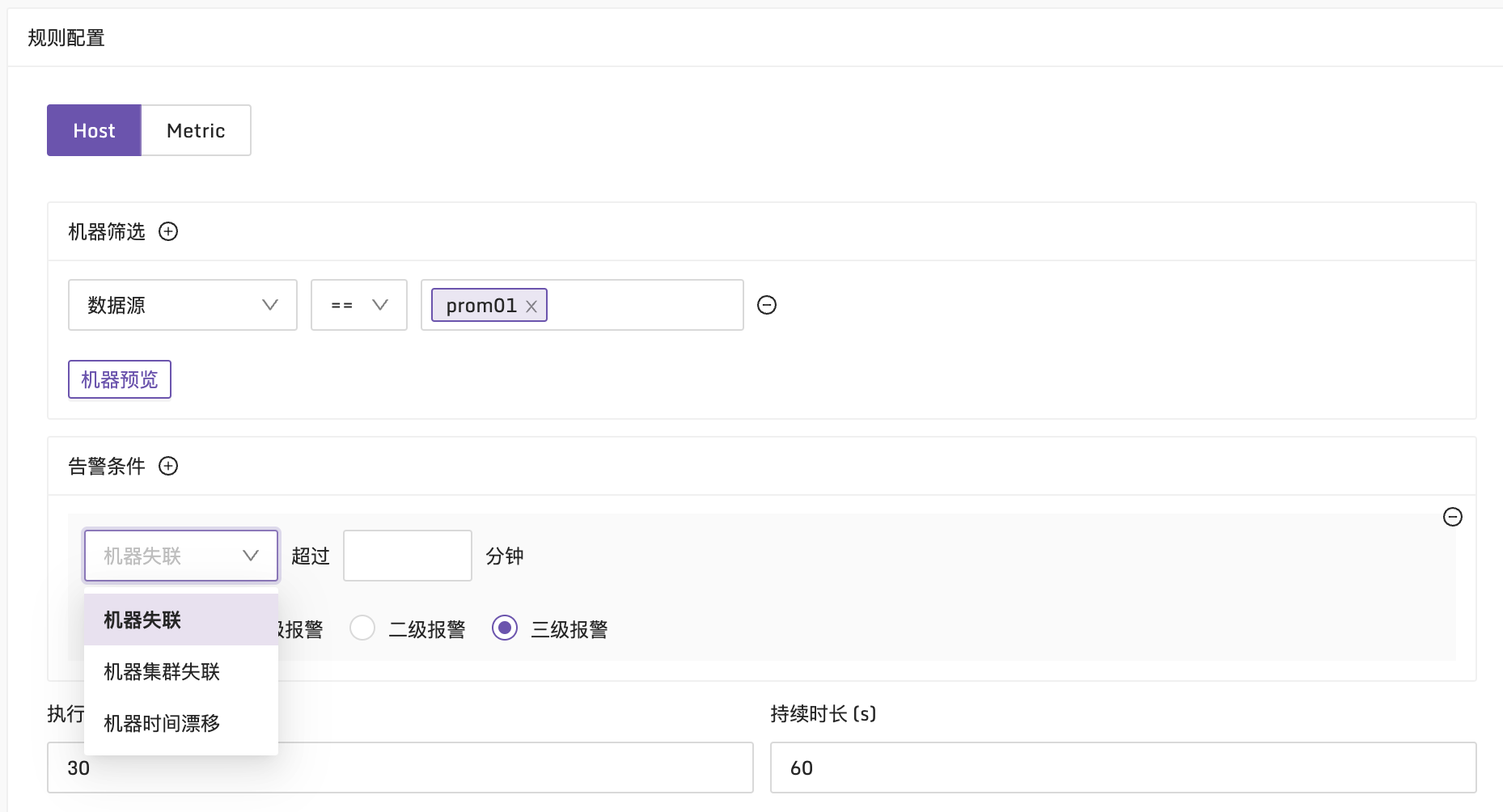
A better implementation has been made for machine disconnection alarms and machine time offsets. The generation logic of the original target_up indicator is discarded, and the machine disconnection alarm and time offset alarm are directly built into the alarm rules, and even an additional machine loss ratio alarm is added.
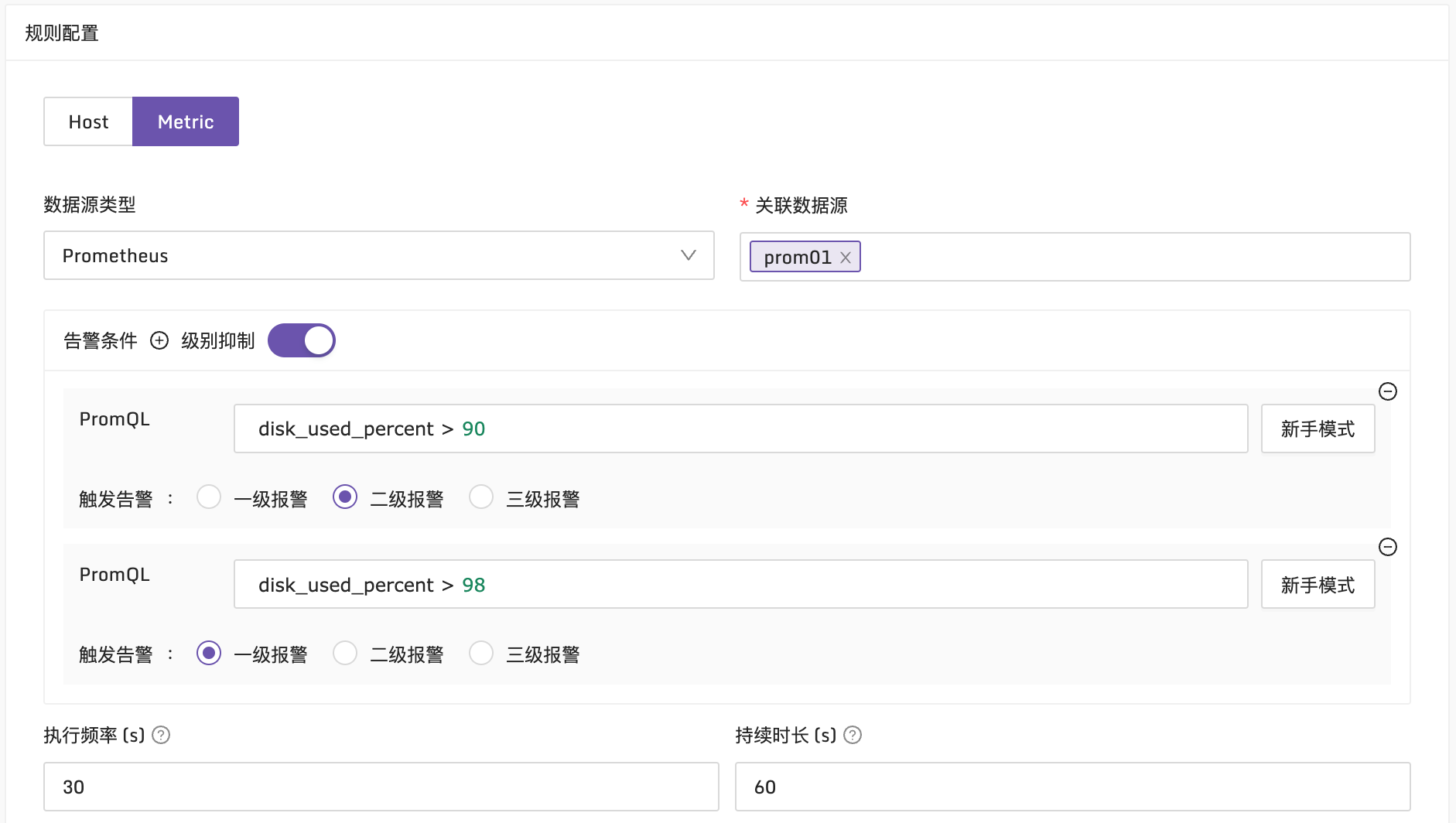
Threshold alarms have also been optimized. Multiple rules can be configured in an alarm policy to specify different levels, and level suppression is supported. High-level alarms suppress low-level alarms.
The commercial version is more powerful, not only supports common threshold alarms, but also supports algorithmic alarm engines, SLS alarm engines, etc.Welcome if necessary Contact us, do product exchange, trial products, win-win cooperation 🙂

By the way, let me introduce the multi-time period configuration of the alarm rule. In fact, version 5.15 supports it, but many people don’t know it. Let me take this opportunity to talk about it. This function is proposed by the community and is very useful for some specific scenarios.
???? Continue to optimize the blocking rules

Increased the periodic shielding of everyone’s thoughts, is it surprising or not? You can see what this means by looking at the picture, so I won’t explain it in detail. Do you feel that some functions of the open source Nightingale are better than many commercial software?????
???? Continue to optimize the subscription rules

The subscription rule introduces the configuration of “the duration of the subscription event exceeds (seconds)”. This function is very cool and can realize the function of alarm escalation to a certain extent. However, it is almost meaningless compared to the complete alarm escalation. If you want to establish a unified alarm event center, receive alarm events from various monitoring systems, and perform functions such as alarm noise reduction, claiming, upgrading, scheduling, and collaboration, please use our FlashDuty, FlashDuty is the SaaS version of the OnCall center, there is a free package available~
In addition, subscription rules can redefine the callback address, and can automatically process some specific alarm events, such as sending specific alarm events to FlashDuty~~
???? Nightingale open source community development and governance
Nightingale Monitor, on May 11, 2022, was officially hosted by the China Computer Federation Open Source Development Committee (CCF ODC), which is the first open source project to accept donations after the establishment of CCF ODC. With the support and drive of the Chinese Academy of Computer Sciences, the continuous investment of Kuaimao Nebula and many companies, and the active participation of thousands of community users, as of now, the Nightingale open source project has obtained 6K stars, 1K forks, and nearly 100 projects on Github. As a Contributor, the Nightingale open source community has shown great vitality.
Nightingale V6 is a key step towards a full-stack observability solution for Nightingale Monitoring, and is the result of the joint efforts of the Nightingale project management committee and the Nightingale open source community.
???? Milestones of the Nightingale Open Source Project
- In March 2020, Nightingale Monitoring was officially open-sourced on Github by Didi Technology. With its excellent product design, flexible architecture and clear and clear positioning, Nightingale Monitoring has rapidly developed into the most active enterprise-level cloud-native monitoring solution in China.
- On May 11, 2022, Nightingale Monitoring officially donated to CCF ODC, the Open Source Development Committee of China Computer Federation, which is the first open source project to accept donations after the establishment of CCF ODC.
- On August 1, 2022, the nightingale monitoring open source community governance structure will be released, and relevant appointments and community honors will be announced.
- On March 9, 2023, Nightingale V6 was newly released, and Nightingale Monitoring was upgraded to an open source observation platform.
???? Communicate and connect
V6 beta version, welcome friends to install and try???? Deployment Guide ???? We are serious about observability!
#monitoring #Nightingale #upgraded #open #source #observation #platform #News Fast Delivery